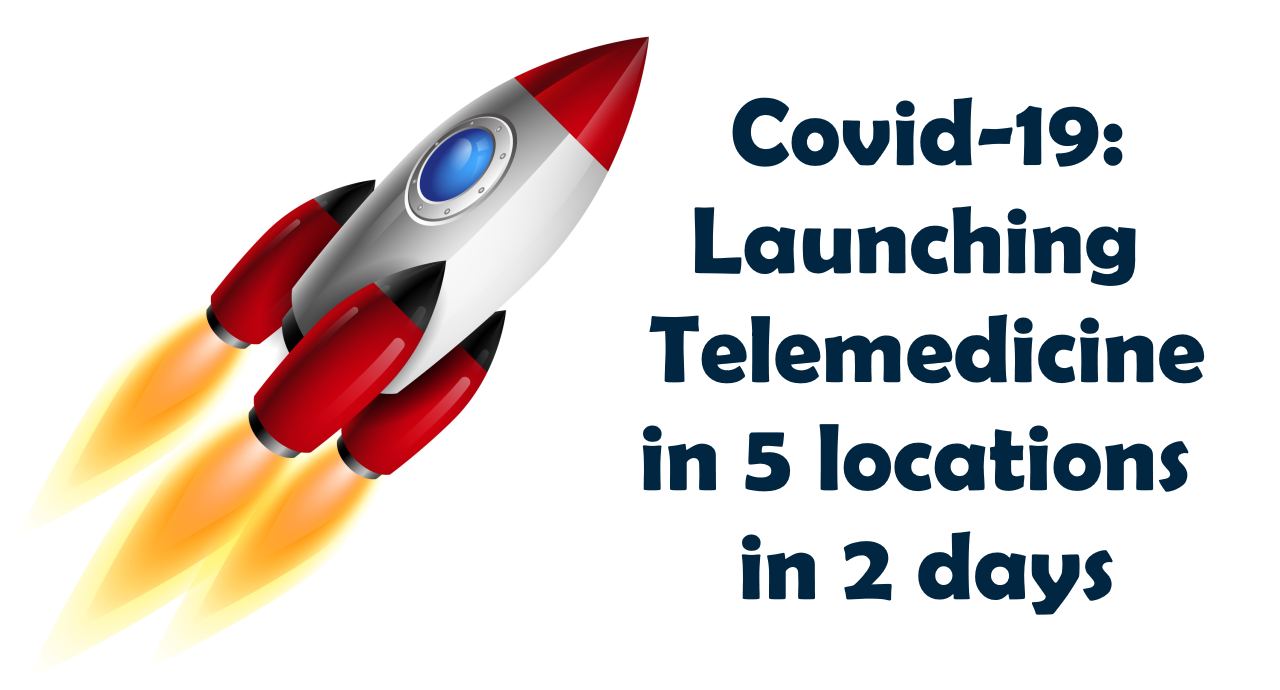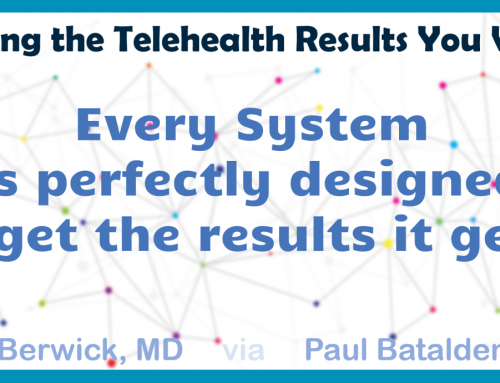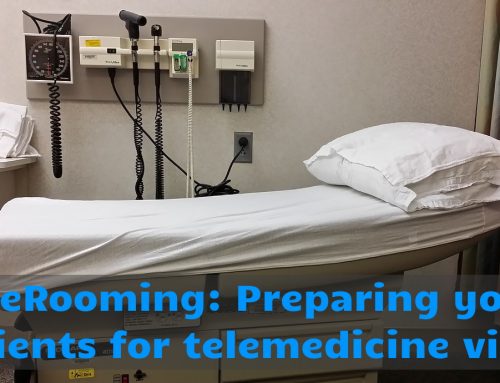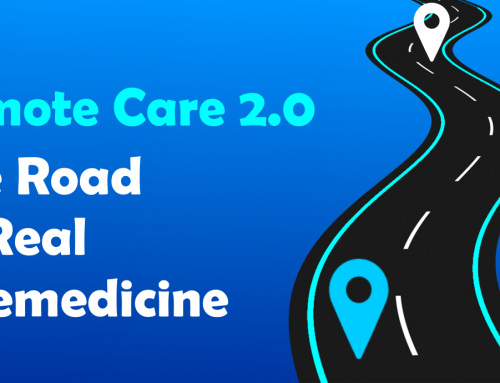The tension in the medical directors meeting was high. It was now clear that the Coronavirus crisis was going to have a significant impact on the world and on the rural healthcare organization that I was working with. The previous day had brought close to 200 cancellations of patient appointments and at 9:30 on a Wednesday, the lobby in this busy clinic was completely empty.
That’s when the CEO, over a video link, turned to me and said: How fast can we launch telemedicine in our clinical practice? And I replied: “By Friday. This Friday.”
Except for a few pediatricians, none of the primary care providers had delivered care “at a distance” before and while we had a usable solution (that some behavioral health providers had used, with varying degrees of success), none of the providers had been trained on it.
By Friday, just 2 days later, we already had at least 12 successful telemedicine visits under our belt and on Monday, yesterday, at least 20 more visits were conducted at a distance. While not all visits went flawlessly (about half had some audio problems that for the most part could be overcome) the general consensus was that the visits were of good clinical quality (between 4.1 and 4.25 on a 5-point scale).
Based on this limited, preliminary data, here are some initial lessons learned:
1. Emphasis on workflow is crucial.
The most important piece of any successful telemedicine service is the workflow. When the various players are not following the workflow as designed things fall apart rapidly and frustrations can quickly run high. Given the traditional variability across providers and locations as to how to organize the work, standardizing on a workflow feels unsettling and is creating some resistance. However, having the end in mind it’s crucial to insist that the workflow steps be followed.
2. In a time of crisis, attention to detail is limited
While we communicated the desired workflow to staff, to providers, and through PDFs, the attention to detail was seemingly limited for most, given the pressure and the novelty of the approach. What was (and is) needed is constant retraining and reminders to follow the process, providing rationale for each step along the way.
3. Training on telemedicine can truly occur in less than half an hour
In just half an hour in a group session including providers and staff we were able to cover the workflow, policy, technology setup and technology use. While immediate retention was maybe at 50%, the quick overview provided everyone with the same knowledge. In adult learning we need to hear things 7 times in 7 different ways (including our own experiences) before they truly sink in and this rapid overview provided one of those 7 ways very effectively.
4. Capturing Data is key.
What’s absolutely crucial during this time is to capture data – not only the volume data from the medical record, but also subjective and objective data from the providers. Did you have any audio problems? Any video problems? How do you assess the clinical quality? What suggestions do you have? Only with those data are we able to continuously change and improve the process, the training materials, the technology configuration, the messaging, the marketing, etc. I.e., everything that has to be in place for this “clinical service” to be delivered flawlessly.
5. Designing the process for long-term is easy to do, but hard to sell
One of the hallmarks of good process design is that it stands the test of time. While most people are focused heads down on the problem at hand, it behooves those responsible for the process design to look 3, 4, 5 steps ahead. What should the process look like in 3 months, in 6 months? What will happen in the next weeks that may have an impact on the quality of the service? As an example, currently, virtually most billing limitation and legal constraints have been waived to get the care to the patients now. However, that is likely going to change and corralling in a wild-west process where everyone does telemedicine when and with whom they want, is going to prove difficult. Which is why I instituted a process that starts with an eligibility check, even though these days the automatic answer is “yes”.
6. Direct-to-Consumer Telemedicine is truly one of the most challenging telemedicine use cases
For me, this was a long-held belief and maybe this is just a self-fulfilling prophecy, but the sheer diversity in the ways that patients are using technology to connect is incredibly hard to manage. Which is why from the beginning I instituted a “test with the patient before scheduling” process that was, for the most part initially ignored by staff. Motivated by the successful tests with me (or other staff in the office), providers felt confident to be able to conduct the visits (which they are) while underestimating the complexities of the patient-facing technology, which we have very little control over. Now, that close to half of the visits did not go as smoothly as hoped, I’m confident to be able to gain more traction with the pre-scheduling test.
7. Clinical Leadership involvement is key
Ultimately, telemedicine is about practicing medicine at a distance. And not all patients and conditions are amenable to telemedicine. To avoid patient harm or dissatisfying telemedicine experiences (for both, providers and patients), an organization has to quickly establish clinical guidelines as to what the clinical leadership deems to be appropriate. There are also numerous clinical telemedicine guidelines published for a variety of specialties that should be consulted.
In summary, a complete successful telemedicine launch can be accomplished in as little as a week. I fully expect that by the end of this week all ~20 providers in all 5 locations to be confident in their ability to deliver great care via telemedicine, whether the providers are in the office or at home.
And if not, you’ll read about it in next week’s newsletter.
If you’d like to learn how you can achieve such a rapid stand up of telemedicine in the proper way, reach out to me this week via the contact options below.








To receive articles like these in your Inbox every week, you can subscribe to Christian’s Telehealth Tuesday Newsletter.
Christian Milaster and his team optimize Telehealth Services for health systems and physician practices. Christian is the Founder and President of Ingenium Digital Health Advisors where he and his expert consortium partner with healthcare leaders to enable the delivery of extraordinary care.
Contact Christian by phone or text at 657-464-3648, via email, or video chat.







[…] In a couple of weeks we’re actually coming up on the 1-year anniversary of the 36-hour launch of Tele Primary Care Services for 5 clinics in a rural FQHC — and it feels like that was 3 years ago. […]